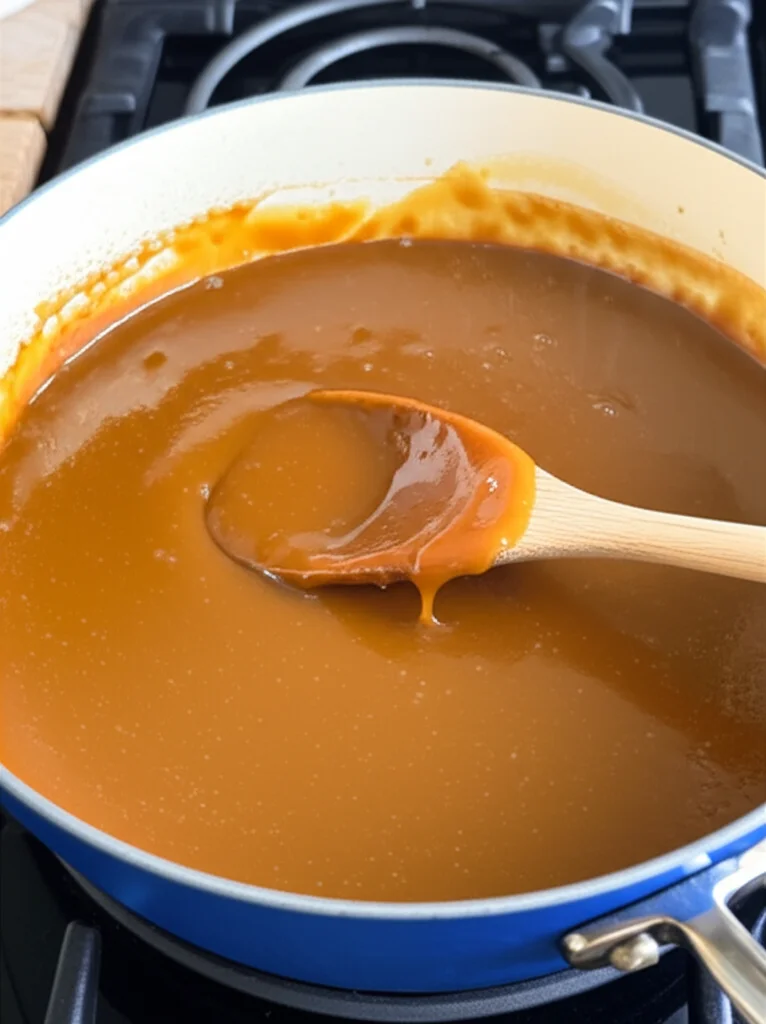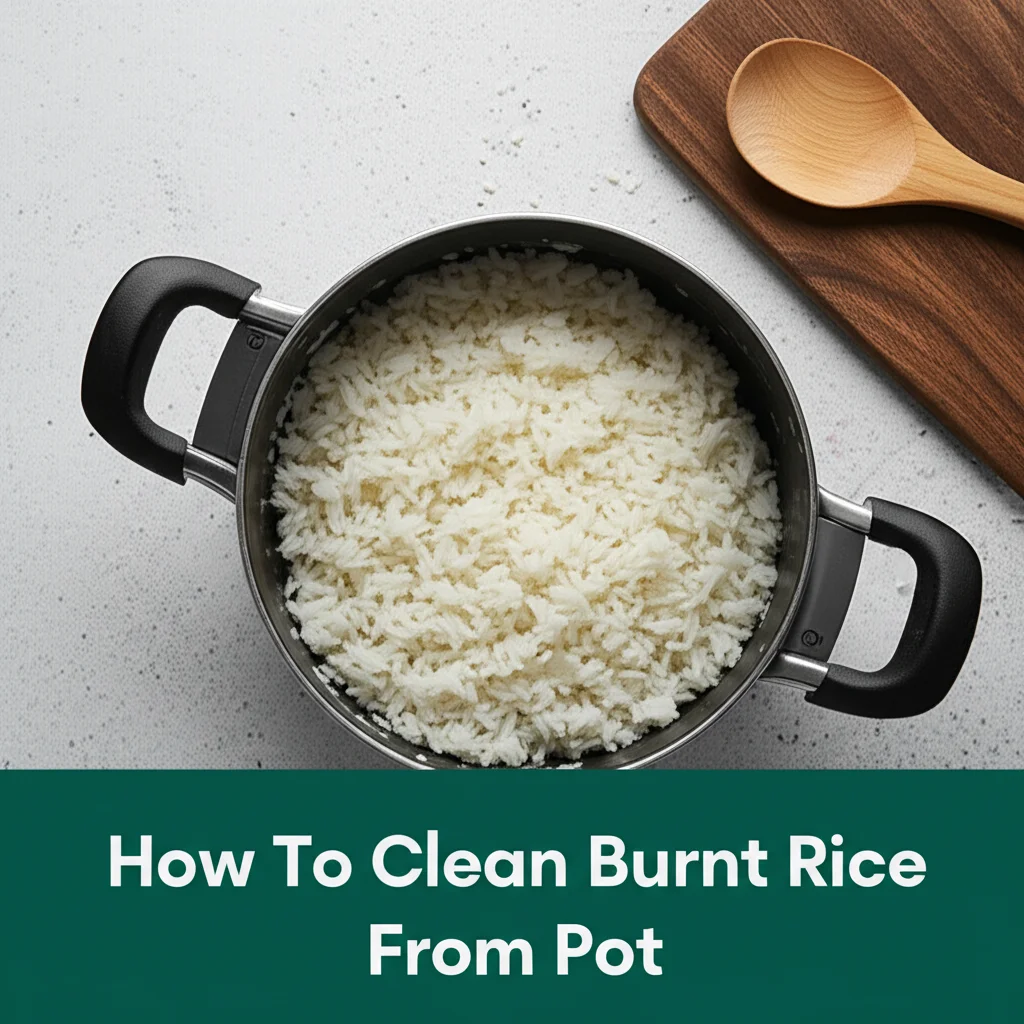· Kianna Connelly · Home Cleaning · 18 min read
How To Clean Caramel Out Of A Pot

Easily Clean Caramel Out Of A Pot
Making caramel is a delightful kitchen adventure. Its rich, sweet flavor brings joy to many desserts. However, the joy often ends when you face the sticky, hardened residue left in your pot. Caramel can be a real challenge to clean. It clings to surfaces, creating a tough, sugary mess. Many cooks dread this part of the process.
I understand the frustration of a caramel-coated pot. It feels like the sugar has fused with the metal. But I have good news for you. You do not need harsh chemicals or endless scrubbing. This guide provides effective methods to clean caramel out of a pot. We will explore simple techniques that dissolve the sticky mess. You will learn how to use common kitchen ingredients. By the end, your pot will be sparkling clean. We will cover basic soaking, boiling methods, and powerful natural cleaners. Let’s get your pots shiny again.
Takeaway
- Soak Immediately: Fill the pot with hot water right after use.
- Boil Water: Simmer water in the pot to dissolve fresh or slightly hardened caramel.
- Use Baking Soda & Vinegar: A powerful combination for tough, burnt-on caramel.
- Avoid Harsh Scrapers: Prevent damage to non-stick surfaces.
- Prevent Build-up: Clean pots promptly to avoid dried, stubborn caramel.
To clean caramel out of a pot, fill it with hot water and let it soak for at least 15-30 minutes. For tougher residue, bring the water to a boil, then add a tablespoon of baking soda and simmer until the caramel dissolves. This softens the sticky mess, making it easy to wipe away without harsh scrubbing.
Understanding Caramel’s Sticky Nature
Caramel is essentially sugar cooked to a specific temperature. When sugar melts, it changes its chemical structure. It becomes a thick, viscous liquid. As this liquid cools, it hardens quickly. This hardening process makes it stick firmly to surfaces. The stickiness comes from the sugar molecules re-forming bonds.
The problem intensifies when caramel burns. Burnt caramel forms an even tougher bond with the pot. It creates a dark, crusty layer. This layer is difficult to penetrate with just water. The heat during cooking causes the sugar to crystallize onto the pot’s surface. This creates a challenging cleaning task. Understanding this helps us choose the right cleaning method. We need methods that can break these strong sugar bonds. Simple scrubbing often fails because the bonds are too strong.
Different types of pots also react differently to caramel. Stainless steel pots can withstand more aggressive cleaning. Non-stick pots require gentler methods to avoid damage. The surface texture plays a role in how well caramel adheres. Smooth surfaces allow caramel to release more easily. Rougher surfaces give caramel more points to grip. This knowledge guides our approach to effective cleaning. We adapt our methods to suit the pot material.
The key to cleaning caramel is dissolving it, not just scraping it. Water is a solvent for sugar. Heat helps water break down the caramel quickly. Soaking and boiling are effective because they leverage this principle. They allow water to penetrate the hardened caramel. This weakens its grip on the pot. Once the sugar bonds break, the caramel becomes soft. It then separates from the pot. This makes cleanup much simpler.
Basic Methods to Dissolve Caramel in Pots
The simplest approach to clean caramel out of a pot involves water and time. As soon as you finish making caramel, fill the pot with hot water. This step is crucial. Do not let the pot sit and cool with the caramel inside. The longer caramel hardens, the tougher it becomes to remove. Hot water immediately begins to soften the sticky residue. This prevents the caramel from setting into a solid, unyielding layer.
Let the pot soak for at least 15 to 30 minutes. For lighter caramel residue, this might be all you need. The hot water will slowly dissolve the sugar. You will see the caramel begin to loosen from the sides and bottom of the pot. After soaking, pour out the water. Use a soft sponge or a silicone spatula to gently scrape away the loosened caramel. You should find it comes off easily. Avoid using metal scrubbers on non-stick surfaces. They can damage the coating.
If the caramel is still a bit stubborn, you can extend the soaking time. Sometimes, an hour or even overnight soaking works wonders. For very thick layers, repeat the process. Empty the pot, refill with fresh hot water, and let it sit again. Patience is key with this method. It is a gentle yet effective way to manage fresh caramel spills.
This method works well for caramel that has not completely solidified. It saves you from intense scrubbing. Always remember that immediate action makes a big difference. The residual heat from cooking helps the hot water do its job even better. This initial soak is your first line of defense against stubborn caramel.
Using Boiling Water for Easy Caramel Removal
When basic soaking is not enough, boiling water comes to the rescue. This method uses heat to accelerate the dissolution process. For caramel that has hardened or partially burnt, boiling is highly effective. It applies direct, continuous heat to the sticky mess. This makes the sugar bonds break down faster.
First, pour out any excess caramel you can. Then, fill the pot with enough water to cover the caramel residue. Place the pot on your stovetop. Bring the water to a gentle simmer or boil. Let it simmer for 5 to 15 minutes, depending on the thickness of the caramel. You will see the caramel begin to melt and dissolve into the water. The water will likely turn a brownish color. This indicates the sugar is re-dissolving.
As the caramel melts, use a wooden spoon or a heat-resistant silicone spatula to gently scrape the bottom and sides. The soft caramel will release from the pot easily. This prevents the need for vigorous scrubbing. Once most of the caramel has dissolved, carefully pour out the hot water. The remaining bits should be soft enough to wipe away with a sponge or a dishcloth.
This technique is particularly useful for stubborn, crusty caramel. It works for all pot materials, including stainless steel and non-stick. For pots with burnt-on sugar, this boiling method softens the char. It prepares the pot for further cleaning, if needed. Boiling water is a simple yet powerful solution for serious caramel challenges. It is often the first step in tackling the toughest caramel messes.
The Power of Baking Soda and Vinegar for Burnt Caramel
When caramel burns and hardens into a formidable crust, plain water often falls short. This is where the dynamic duo of baking soda and vinegar shines. This combination creates a chemical reaction that effectively breaks down burnt sugar. It acts as a powerful cleaner for your pot. The fizzing action helps lift stubborn residue.
First, remove as much loose caramel as possible from the pot. Then, cover the bottom of the pot with water, ensuring all burnt caramel is submerged. Add 2-3 tablespoons of baking soda to the water. Place the pot on the stovetop and bring the mixture to a boil. Reduce the heat and let it simmer for about 10-15 minutes. The baking soda works to loosen the burnt bits. For an even more potent attack on stubborn stains, combine this with a tried-and-true method for general tough residue: how to clean baked on grease from pans.
After simmering, carefully remove the pot from the heat. Pour in about 1/2 cup of white vinegar. You will observe a fizzing reaction. This effervescence helps to lift the burnt caramel. Let the mixture sit in the pot for at least 30 minutes, or even a few hours for very tough cases. The longer it sits, the more effective it becomes. For a deeper understanding of this powerful cleaning pair, explore how to clean with vinegar and baking soda.
Once cooled, gently scrape the caramel with a wooden or silicone spatula. The burnt bits should now come off easily. Wash the pot as usual with dish soap and warm water. This method is incredibly effective for burnt sugar, minimizing scrubbing. If you encounter extremely persistent burnt sugar, a more specialized approach may be beneficial: how to clean burnt sugar from a pan. This strategy ensures your pots come clean with minimal effort.
Tackling Stubborn Caramel with Dish Soap Solutions
Dish soap is a common kitchen cleaner. It can be surprisingly effective against stubborn caramel. While water dissolves sugar, dish soap’s degreasing properties help break down the sticky layers. Caramel often contains fat if butter or cream is used. Dish soap helps to emulsify these fats, making the caramel easier to remove.
For tough, dried caramel, start by filling the pot with hot water. Add a generous squirt of dish soap. Let the mixture soak for several hours, or even overnight. The hot water and soap work together. They penetrate the hardened caramel. This slowly dissolves the sugar and breaks down any fatty components. After a good soak, most of the caramel should have softened significantly.
Once soaked, try to gently scrape the caramel with a wooden or plastic spatula. If needed, you can also bring the soapy water to a gentle simmer for 5-10 minutes. This extra heat boosts the soap’s effectiveness. The combination of heat and soap can loosen even the most stubborn caramel. After simmering, carefully pour out the hot, soapy water.
Use a non-abrasive sponge or cloth to wipe away the remaining residue. For stainless steel pots, a gentle scrubbing pad can be used if necessary, but always test in an inconspicuous area first. This method is safe for most pot materials. It avoids harsh chemicals. It is a good option when you prefer not to use baking soda or vinegar. This approach combines the dissolving power of water with the cutting action of dish soap. It leaves your pot clean without damage.
Scraping Techniques and When to Use Them
Scraping is often necessary for very thick or hardened caramel. However, it requires care to avoid damaging your pot. The type of scraper you use depends on your pot’s material. Choosing the right tool prevents scratches and preserves your cookware.
For non-stick pots, use only soft, non-abrasive scrapers. A wooden spatula or a heat-resistant silicone spatula is ideal. These tools are flexible and will not scratch the delicate non-stick coating. Never use metal spatulas or abrasive pads on non-stick surfaces. They can quickly ruin the pot’s finish. Always try soaking or boiling first. Scraping should only be a last resort or for very small, loosened bits. Gently push the softened caramel away from the pot’s surface.
For stainless steel pots, you have more options. You can use a wooden, plastic, or even a metal spatula. However, exercise caution. Even stainless steel can scratch if too much force is applied. A plastic scraper designed for kitchen use is often the best choice. It is firm enough to remove stubborn residue but less likely to leave marks. For exceptionally tough, burnt-on residue, sometimes a specialized plastic pot scraper designed for stuck-on food can be useful. These have a flat edge that can get under the residue without being overly aggressive. Cleaning specific residues like tea stains from stainless steel might also involve careful scraping if the stains are very old and set.
When to scrape: Only scrape after the caramel has been softened. Soaking, boiling, or using the baking soda/vinegar method should always precede scraping. This significantly reduces the effort required. It also minimizes the risk of damaging the pot. If the caramel does not come off easily with gentle scraping, it needs more soaking or heating. Patience is key. For example, if you are cleaning dishes in your machine, knowing how to clean a dishwasher with vinegar and baking soda ensures that even your dishwasher handles stuck-on residues efficiently, reducing the need for aggressive scraping on your pots afterward.
Remember, the goal is to lift the caramel, not gouge it out. Work slowly and apply even pressure. This preserves your pot’s integrity.
Preventative Measures for Caramel Cleanup
The best way to clean caramel out of a pot is to prevent it from sticking severely in the first place. A little foresight can save you a lot of scrubbing. Implementing simple habits makes caramel cleanup much easier. These measures reduce the likelihood of burnt-on residue.
First, use the right pot. Heavy-bottomed pots distribute heat more evenly. This prevents hot spots where sugar is more likely to burn. Thinner pots can cause caramel to burn quickly in certain areas. A good quality stainless steel pot is often preferred for caramel making. Its robust surface handles high heat well.
Second, do not overheat the sugar. Sugar burns quickly once it reaches a certain temperature. Pay close attention to the caramelization process. Use a candy thermometer for precise temperature control. Remove the pot from the heat as soon as the caramel reaches the desired color and consistency. This prevents it from turning into a burnt, hardened mess.
Third, stir consistently (when appropriate). For wet caramel (sugar dissolved in water), stirring helps prevent crystallization and burning. For dry caramel (sugar melted directly), avoid stirring initially. Once it starts to melt, you can gently swirl the pan to even out the heat. Continuous movement keeps the sugar from settling and burning on the bottom.
Fourth, add water immediately after emptying. As soon as you pour out the caramel, fill the pot with hot water. Let it sit while you finish your baking. The residual heat from the pot will warm the water. This starts the dissolving process right away. This is the single most effective preventive step for easy cleanup. It stops the caramel from hardening completely.
By following these preventative steps, you minimize the sticky challenge. You make the cleanup process much less daunting. A little care during cooking saves you significant effort afterward.
Advanced Techniques for Stubborn Caramel Residue
Sometimes, despite your best efforts, caramel becomes extraordinarily stubborn. When the standard methods do not fully succeed, a few advanced techniques can help. These methods provide extra power for particularly resistant residue. They work by further breaking down the strong bonds of burnt sugar.
One technique involves using dishwashing detergent pods. Place a pod in the pot. Fill the pot with hot water, just enough to cover the caramel. Let it sit overnight. Dishwasher detergents are highly concentrated. They contain powerful enzymes and degreasers designed to break down tough food residue. The long soak allows these agents to work thoroughly on the caramel. In the morning, you should find the caramel has significantly loosened. This method is strong, so avoid it on very delicate non-stick coatings unless specifically advised by the pot manufacturer.
Another powerful agent is laundry detergent. This is similar to the dishwasher pod method but uses a different type of concentrated cleaner. Add a small amount of liquid laundry detergent to the pot with hot water. Again, let it soak for several hours or overnight. Laundry detergents are designed to break down tough organic stains. They can be very effective against burnt-on sugar. Rinse the pot thoroughly multiple times after using laundry detergent to ensure no residue remains. Always wear gloves when handling concentrated detergents.
For extremely thin, burnt layers, a paste of baking soda and a small amount of water can work. Apply this thick paste directly to the burnt caramel. Let it sit for an hour or two. The abrasive nature of the baking soda, combined with its alkalinity, helps to lift the charred bits. After sitting, gently scrub with a non-abrasive sponge. This method is effective for localized burnt spots. It also acts as a gentle abrasive for scrubbing.
Always remember to rinse your pot thoroughly after using any strong cleaning agent. You want to ensure no chemical residue remains before cooking in it again. These advanced techniques provide a last resort for the most challenging caramel messes. They make sure you can clean caramel out of a pot no matter how stubborn it is.
Essential Tools and Safety Precautions for Caramel Cleaning
Cleaning caramel out of a pot is easier with the right tools. It also requires some safety considerations. Protecting yourself and your cookware is important. Using the correct tools prevents damage to your pots. Observing safety measures prevents burns or injuries.
Essential Cleaning Tools:
- Wooden or Silicone Spatulas: These are crucial for non-stick pots. They scrape off softened caramel without scratching.
- Non-Abrasive Sponges or Cloths: Soft materials are best for wiping away dissolved caramel. They do not damage surfaces.
- Plastic Scrapers: These are firmer than spatulas but still safe for most surfaces. They help lift tougher, loosened bits.
- Measuring Spoons/Cups: For accurate use of baking soda or vinegar.
- Heat-Resistant Gloves: Protect your hands when handling hot pots or strong cleaning solutions.
- Stovetop: Necessary for boiling water methods.
Safety Precautions:
- Handle Hot Pots Carefully: Always use oven mitts or pot holders when dealing with hot pots. Boiling water can cause severe burns.
- Pouring Hot Water: Be cautious when pouring out hot water. Do it over a sink and away from your body.
- Ventilation: When using vinegar, especially with heat, ensure good ventilation. The fumes can be strong.
- Avoid Mixing Chemicals: Never mix cleaning agents unless specifically instructed. For example, do not mix bleach with vinegar. This can create dangerous gases. Stick to the methods described in this guide.
- Test Abrasives: Before using any scrubbing pad or abrasive on your pot, test it in an inconspicuous area. This prevents accidental damage.
- Rinse Thoroughly: After using any cleaning agent, rinse the pot multiple times with clean water. Ensure all residues are gone before cooking again. This is especially important for strong detergents.
- Protect Your Eyes: If using strong cleaning solutions, consider wearing eye protection. Splashes can cause irritation.
By preparing with the right tools and keeping safety in mind, you make the cleaning process smooth and safe. You can effectively clean caramel out of a pot without worry. These simple precautions protect both you and your valuable kitchenware.
FAQs About Cleaning Caramel Out Of A Pot
Q1: Can I use steel wool to clean burnt caramel?
A1: You should avoid using steel wool, especially on non-stick or delicate pot surfaces. Steel wool can scratch and permanently damage the pot’s finish. For stainless steel, it might be used cautiously on very stubborn spots, but gentler methods are always preferred first to preserve the pot.
Q2: How long should I soak a pot with burnt caramel?
A2: For burnt caramel, soaking can range from 30 minutes to several hours, or even overnight. The exact time depends on the thickness and stubbornness of the caramel. Longer soaking times generally lead to better results, allowing the caramel to dissolve fully.
Q3: Will cleaning caramel damage my non-stick pot?
A3: If done correctly, cleaning caramel will not damage your non-stick pot. Always use hot water, baking soda, and vinegar, along with soft scrubbers like silicone spatulas or non-abrasive sponges. Avoid metal tools and harsh scraping to protect the non-stick coating.
Q4: Can I put a pot with caramel in the dishwasher?
A4: You can put most stainless steel pots in the dishwasher. However, for pots with burnt or hardened caramel, it is usually better to pre-clean them manually. Dishwashers might not effectively remove tough caramel, and it can clog the dishwasher’s filter.
Q5: What if caramel is stuck on the outside of the pot?
A5: For caramel stuck on the outside, a similar approach works. Apply a hot, wet cloth soaked in dish soap directly to the area. For stubborn spots, create a baking soda paste with a little water and apply it. Let it sit for a while, then scrub gently.
Q6: Can I use salt to clean caramel?
A6: Salt can act as a gentle abrasive when mixed with water or dish soap. However, it’s not as effective at dissolving caramel as boiling water or baking soda and vinegar. It can help loosen minor sticky spots, but it is not recommended for heavily burnt-on residue.
Conclusion
Cleaning caramel out of a pot does not have to be a dreaded chore. By understanding the nature of this sticky substance and employing the right techniques, you can restore your pots to their sparkling best with minimal effort. We have covered several effective methods, from simple soaking and boiling to the powerful combination of baking soda and vinegar. Each approach aims to dissolve the sugar bonds, making cleanup a breeze.
Remember the importance of immediate action. Filling your pot with hot water right after use is your first and often most effective defense against hardened caramel. For more stubborn or burnt-on messes, embracing the heat of boiling water or the fizzing power of baking soda and vinegar will make a significant difference. Always choose your cleaning tools wisely to protect your pot’s surface, especially non-stick ones.
I encourage you to try these methods next time you make caramel. You will find that cleaning your pots is much easier than you ever thought possible. Say goodbye to endless scrubbing and hello to sparkling clean cookware. Keep these tips in mind, and you will always know how to clean caramel out of a pot effectively. Your kitchen cleaning routine will thank you for it!





